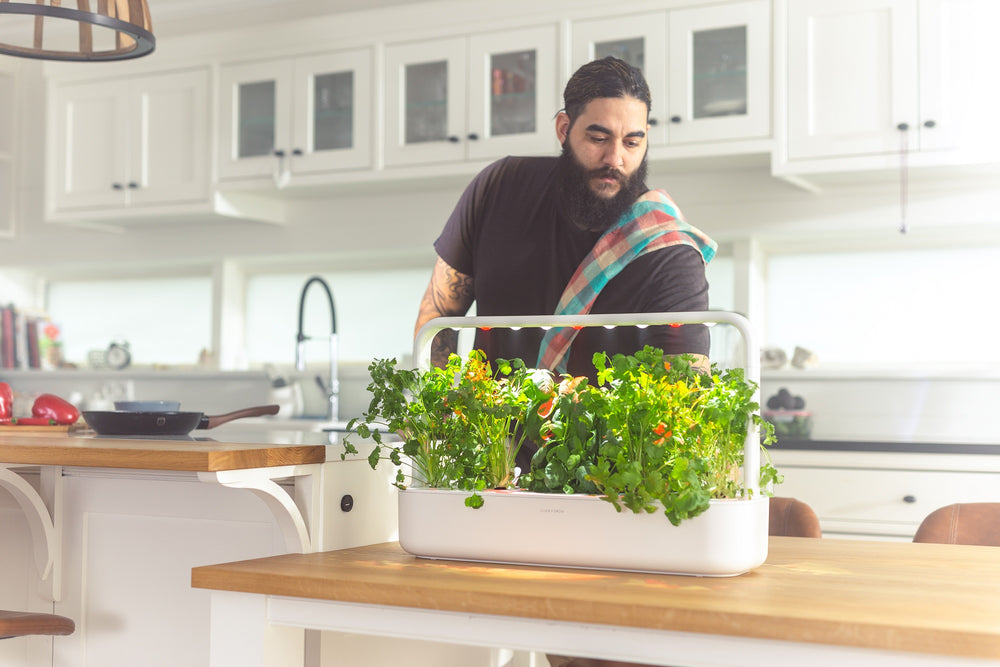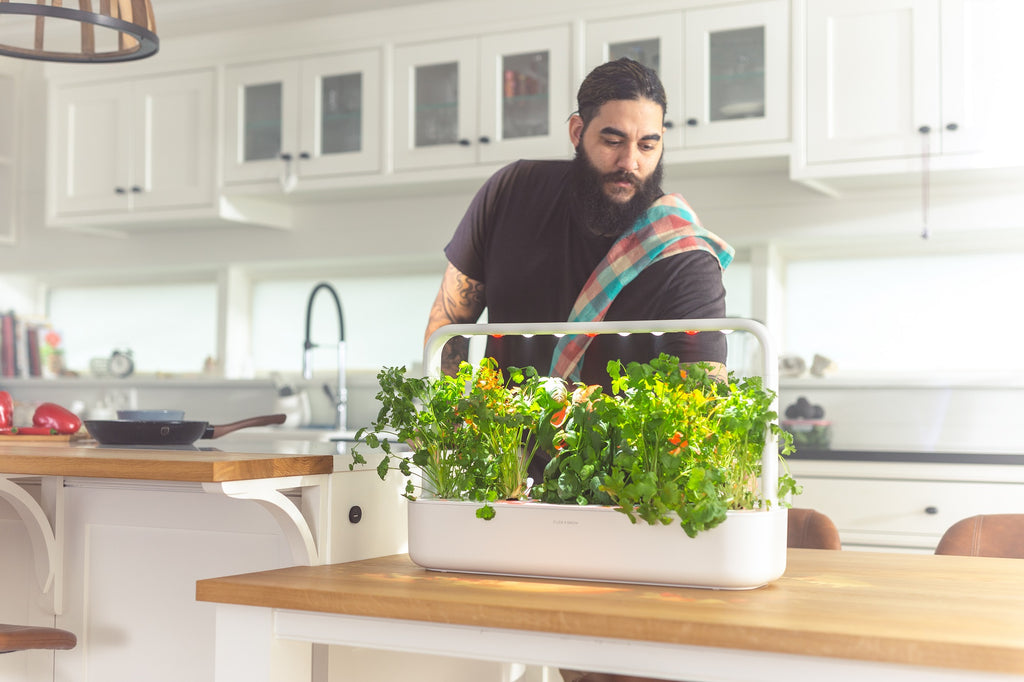News
3 Must-Have Italian Herbs (and How to Use Them)


Blending herbs, vegetables and spices to create delicious new flavors is one of the many reasons Italian restaurants are so popular. They have some of the best recipes, the freshest ingredients and they know how to cook them all. If you're a fan of Italian food and want to make your dishes extra special, here are 3 versatile herbs you’ll want to grow in your Click and Grow smart garden:
1. Thyme

When it comes to Italian cuisine, thyme has been appreciated for centuries. It's a popular ingredient in pesto and many other sauces, while complementing chicken and beef dishes.
One of the most common ways to use thyme is to add it to roasted vegetables, soups and stews, or any dish that needs some extra flavor. You can also use thyme as a garnish on steamed veggies or in salads.
Thyme has several reported health benefits as well. It’s particularly rich in vitamins A & C. Vitamin A is a powerful antioxidant that helps maintain healthy mucus membranes, skin and good vision. Vitamin C helps our bodies fight back against infectious diseases, while protecting us against harmful free radicals.
Growing Thyme in your Smart Garden
- Optimal room temperature: 18-30 °C / 64-86 °F.
- No thinning required.
- Naturally grows wild and messy which is perfectly normal.
Harvesting Thyme
- Optimal harvesting time period: 35-84 days.
- To encourage new growth, trim the tips of the plant, leaving at least two pairs of true leaves. New stems will appear soon.
- Feel free to use the tiny tips harvested from a young plant for dishes or tea.
Recipes to try
2. Dwarf Basil

If you know basil, you’ll know it’s the king of herbs. But it has a cousin that goes by the name of "dwarf basil"--and it’s more handsome and compact than its regal relative. In fact, dwarf basil contains all the same benefits of regular basil, making it a very underrated herb.
When it comes to Italian cuisine, dwarf basil is especially great for soups, tomato-inspired dishes and for giving a little kick to fresh salads. Of course, it can also be used to make a delicious pesto sauce. When a recipe lists basil as one of the ingredients, you can almost always substitute it with dwarf basil if you prefer that variety.
Basil is loaded with antioxidants which help fight free radicals and reduce the risk of many diseases.
Growing Dwarf Basil in your Smart Garden
- Optimal room temperature: 18-30 °C / 64-86 °F.
- No thinning required.
- Your smart garden only needs one lamp arm to grow dwarf basil. If the stems are about to touch the lamp, simply cut them back.
Harvesting Dwarf Basil
- Optimal harvesting time period: 35-84 days.
- Dwarf basil likes to be trimmed. You can start trimming approximately one month from planting.
- For more thriving growth, pinch off the whole tip - it'll grow two new shoots in a week.
Recipes to try
Tomato, Cucumber, and Basil Salad
3. Marjoram

Marjoram is an earthy, fragrant herb that's great for Italian cuisine. If you like oregano, then the chances are you’ll like Marjoram too. Marjoram is slightly sweeter and has a more delicate aroma.
This herb can be used in soups, stews, sauces, and stuffing. It’s also ideal for complementing poultry and veal dishes.
Fresh marjoram leaves are best when added toward the end of cooking, so their flavor stays bright and punchy. Dried marjoram leaves are perfect for herb blends and can be used just like other dried herbs.
It’s much more than just a tasty herb, Marjoram also contains antioxidant, anti-inflammatory, and antimicrobial properties.
Growing Marjoram in your Smart Garden
- Optimal room temperature: 18-30 °C / 64-86 °F
- No thinning required.
- Like dwarf basil, it only needs one smart garden lamp arm to grow.
Harvesting Marjoram
- Optimal harvesting time period: 35 - 84 days
- You may trim your Marjoram for more growth, starting from a month after planting. Remember to leave at least two pairs of true leaves to grow while cutting.
- Alternatively, let your Marjoram bloom if you’d like to use its tiny pink flowers as an edible garnish.
Recipes to try
Easy Peasy Spaghetti with Marjoram and Tomatoes
Sautéed Carrots with Lemon and Marjoram

So, there you have it; Three must-have Italian herbs to grow in your smart garden! If you don’t already have a smart garden, why not treat yourself to our ‘Big Italian Herb Kit’? You’ll get all three of these herbs, plus a Smart Garden 9 so you can start growing them on your kitchen counter right away.
Even if you aren’t a big fan of cooking, that doesn't mean you can't enjoy the taste and aroma of Italian herbs in your home. The right plants can make your kitchen smell like an Italian restaurant, and they're easy to grow indoors.
